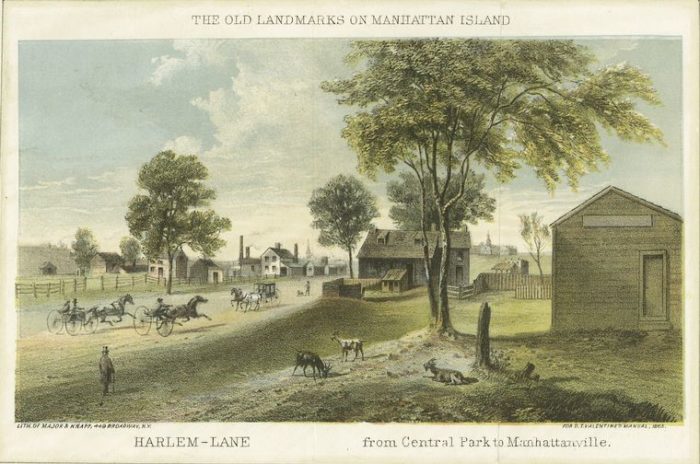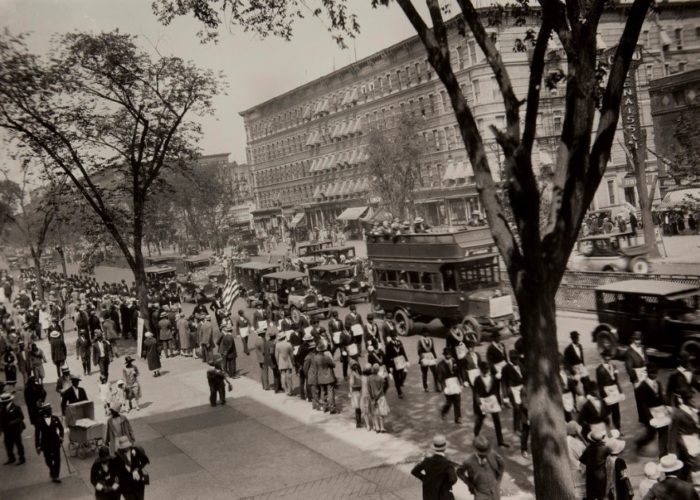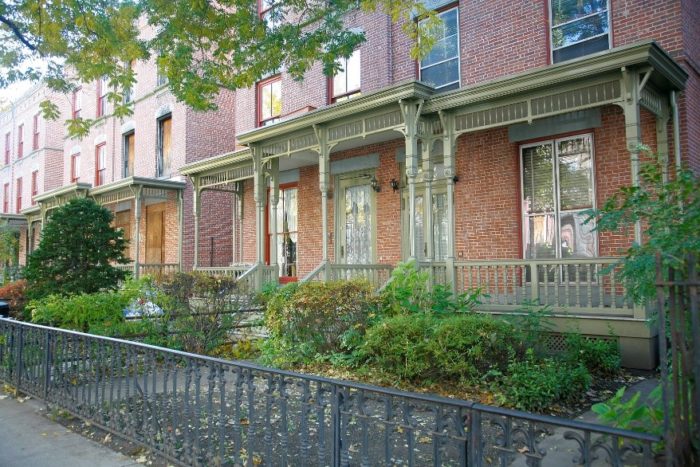Beginning in the early 1900s, oppressive Jim Crow Laws in the south and growing industrial employment opportunities in the north culminated in The Great Migration—the flight of millions of black men and women from southern states to northern cities.
As African Americans gained employment and access to urban infrastructure, while still combatting virulent racism, they sought to establish their place in the fabric of American public, political and artistic life. The 1920s and 30s, in particular, brought about a time of explosive artistic expression and burgeoning cultural identity, and perhaps nowhere was its expression more powerful than in what’s come to be known as the Harlem Renaissance.
An 1828 image featuring Harlem Lane, now roughly St. Nicholas Avenue (Image: Wikimedia)
Dubbed Nieuw Haarlem, or New Harlem, after the Dutch city of the same name, in its earliest European iterations, Harlem was sparsely populated by farmland and getaway estates for wealthy downtown New Yorkers with names like Beekman, Bleecker, Riker and Delancey. Completely ravaged by the American Revolution, Harlem grew more slowly than southern neighborhoods, in terms of both population and infrastructure, through much of the 19th century. After the Civil War, however, the neighborhood experienced a boom time of sorts with a rapid expansion of homes and industry and a growing population of Jewish and Italian residents thanks to European migration. Accelerated by the anticipation of elevated train access, large apartment houses began to replace row houses, and soon, Puerto Ricans began arriving in the eastern part of Harlem, adding another layer of diversity to the cultural melting pot.
By the time of the Great Migration, forces within Manhattan—including anti-black riots in the Tenderloin and the destruction of black tenements to make way for the original Pennsylvania Station – had already made Harlem a destination for the New York’s black population. The NAACP established a chapter in the area in 1910—it would soon be the largest—and Marcus Garvey launched an outpost of his Universal Negro Improvement Association there soon after.
Following World War I, growing disillusionment and fervent activism gave rise to the New Negro Movement, or what would become known as the Harlem Renaissance. In 1925, author and publisher Alain Locke—called a founding father of the movement—summed up the stirring sentiment of the time by writing: “With this renewed self-respect and self-dependence, the life of the Negro community is bound to enter a new dynamic phase.” Further encouraging on the black community to “rise from social disillusionment to race pride.” And, while known as the Harlem Renaissance, the period had impact on black thought and expression across the country.
Portrait of Alain Locke by Betsy Graves Reyneau (Image: Wikimedia)
Calling on writers, in particular, to uplift the black community, speak to black identity and combat institutional racism, the social movement gave rise to a literary movement. An unprecedented number of prolific essayists, novelists and poets, including Zora Neale Hurston, Countee Cullen and Langston Hughes, lived and worked in Harlem at this time. Meanwhile, greats like Louis Armstrong, Count Basie and Duke Ellington were reflecting the spirt of the renaissance in their music, and even white artists were influenced by the movement—George Gershwin’s opera “Porgy and Bess” being the chief example.
A parade down Seventh Avenue (now Adam Clayton Powell Jr. Boulevard) at West 138th Street circa 1920. (Image: Museum of Photographic Arts/Flickr)
Ironically, the popularity of the black musicians of the Harlem Renaissance were, in a small way, to blame for the end of this relatively brief era. Gangster and bootlegger Owney Madden created the original Cotton Club at 142nd Street and Lenox Avenue as a whites-only venue featuring black entertainment, including Ellington, Armstrong and Cab Calloway, in a racist backdrop of jungle and plantation décor. So wildly popular was the large club, that it began to push out small black venues that couldn’t compete. Langston Hughes wrote of the situation in his autobiography: “Nor did ordinary Negroes like the growing influx of whites toward Harlem after sundown, flooding the little cabarets and bars where formerly only colored people laughed and sang, and where now the strangers were given the best ringside tables to sit and stare at the Negro customers—like amusing animals in a zoo.”
The Harlem Cotton Club around 1923 (Image: Schomburg Center for Research in Black Culture/NYPL)
The arrival of the Great Depression, a series of riots and World War II put an end to the Harlem Renaissance and ushered in a period of civil unrest and economic challenges for the neighborhood. The racial composition began to change as well with black population density in the area peaking in 1950. In part motivated by the passage of the Civil Rights Act of 1964, which opened up new housing opportunities for people of color, Harlem’s black population began moving to outer boroughs and suburbs.
As the demoralizing 1970s devastated the entire city, few neighborhoods suffered as much as Harlem. Beset by government scandal, drug trade, deteriorating housing and unemployment, the population dwindled, reaching a low of 101,026 in 1990 from its peak of 237,468 in 1950. Vacant buildings were left to deteriorate or were demolished, leaving empty, garbage-strewn lots in their wake.







